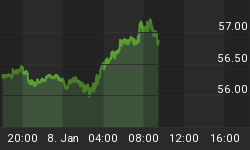U.S. stocks closed lower for the second day running on Wednesday as they took a breather after a spectacular start to the year. Major indexes such as the S&P 500, Dow Jones and Nasdaq Composite have stringed together anywhere from 8-10-week winning streaks that are a sharp contrast to the dismal show they put up during the previous year’s end.
The market is still pretty optimistic that a comprehensive U.S.-China trade deal will materialize after last year’s prolonged showdown.
The broad-market benchmark, the S&P 500, has been testing key levels even as it seems poised for a breakout that could propel it to a new all-time highs. The short-term trend has been bullish ever since it displayed a golden crossover towards the tail-end of 2018, with this year’s 10.5 percent gain confirming the trend.
The S&P 500 seems to be facing considerable resistance around the 2,800 level but the bulls can take comfort in the fact that it has not come anywhere near close to breaching the 2,600 support level at any point in the current year. Even though the index has struggled to hold above the 2,800 level, it’s still up nearly 19 percent from its December 24th low.
The verdict, therefore, seems to be that the secular bull market is still very much alive and there’s a fairly good chance that it could soon break above the previous failed breakout of around 2,870 if some solid catalysts come its way.
Cautious optimism
It appears that the bull market is simply waiting for validation before another up-leg; a date for when President Trump and President Xi will meet presumably meet for a signing ceremony could send the markets in a celebratory mood, or, at the very least, help them breathe a sigh of relief.
However, investors should place their bets cautiously. Related: As Retail Apocalypse Continues, More Stores Are On Verge Of Collapse
A roaring U.S. jobs market has been a major catalyst for the ongoing bullishness about the health of the economy. But the latest trend offers some reason for caution.
According to chairman of Renaissance Macro Research, Jeff de Graff, a flattening off in the unemployment curve has historically served as a fairly effective early indication of a market top. Unfortunately, the latest labor data suggests that we could be at the cusp of peak employment rates.
For the first time in many months, December unemployment claims shot up by 4,000 to 239,000 while the four-week average, which normally does not bounce around as much, climbed 6,750 to 231,750. Jobless claims are a fairly good proxy for layoffs with low levels being consistent with a healthy job market.
But perhaps even more worrying is that fact that the report coincided with another one claiming that holiday retail sales had contracted for the first time in nearly a decade.
The U.S. Commerce Department reported that December retail fell 1.2 percent, marking the biggest contraction since September 2009. With consumer spending driving nearly two-thirds of the U.S. economy, its significance as an economic indicator can hardly be gainsaid.
Nevertheless, investors can take some comfort in the fact that the two metrics came against a backdrop of the worst government shutdown in history.
For now, U.S. stocks continue to trade near their highs for the year, and even China’s 30-year low economic growth forecast has not dampened the bullish mood too much. Meanwhile, Trump will be pushing hard to strike a deal with Beijing in the hope that a healthy stock market will boost his re-election bid
Barring any major surprises, cautious optimism seems to be the best approach at this juncture.
By Alex Kimani for Safehaven.com

















